What’s a weir?
In the first photos I posted from our trip to Redoubt Lake, I included this one of Mama Bear, leading her cubs over one of the fish weirs.
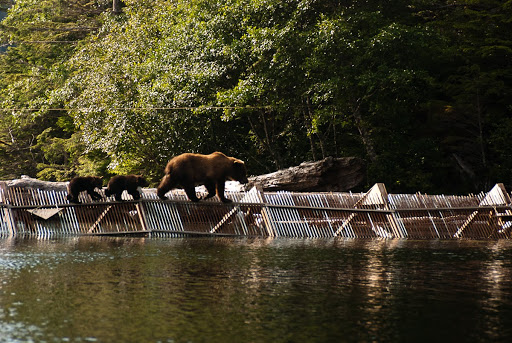
Now, I suppose that not everyone knows what a “weir” is. I didn’t really have much of an idea when I started this job, although I did get excited because I saw a reference to a “vortex weir” which sounds like something totally awesome. I still don’t know what a vortex weir is, but the one you see above is a “picket weir.” Essentially, it is a picket fence in the water.
The back side of the weir is supported by big wooden tripods. The front side is metal poles, or pickets, which are threaded through two or three layers of framing to hold them in place. Since they hold up with bears walking across them, you can see that it’s a pretty sturdy structure.
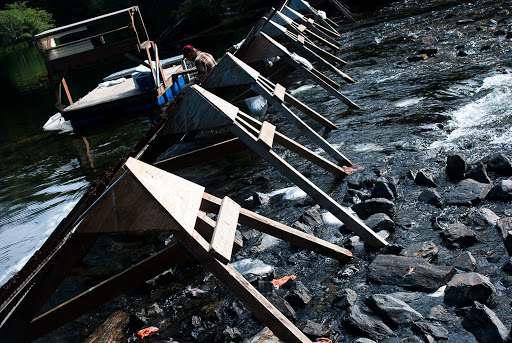
Weir from the backside.
Orange-pink bits below the weir in the foreground are salmon carcasses discarded by the bears.
The advantage of the pickets, since they slide up and down, is that they can follow the contours of the bottom of the stream. The bottom of the pickets are covered with sandbags, which hold them down and cover any gaps, making it “fish-tight.”
Since all the returning salmon want to go upstream, or, at Redoubt Lake, up the falls and into the lake, they get backed up behind the weir. (That’s why the bears are there.) The Forest Service staff who are spending the summer working at the weir pull up the pickets to create gaps and let the fish through, counting every one.
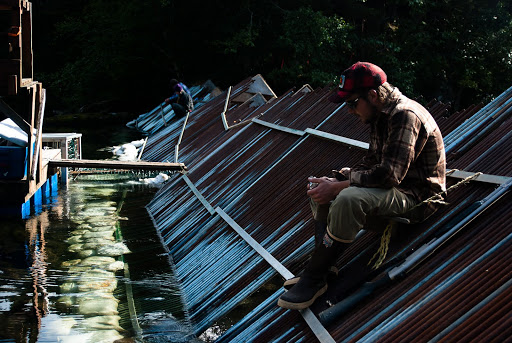
Jon counting fish as they pass through the weir
Most of the fish get through with no hassle, but 10% of the fish that go through find themselves inside a fish trap, and become research subjects.
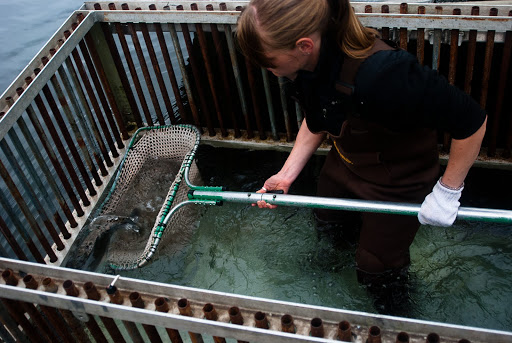
Laura nets a fish in the trap.
Since the bears are sloshing around in the water by the weir, and the water is always pushing to get through and down the falls, they check the weir to make sure it is still fish-tight.
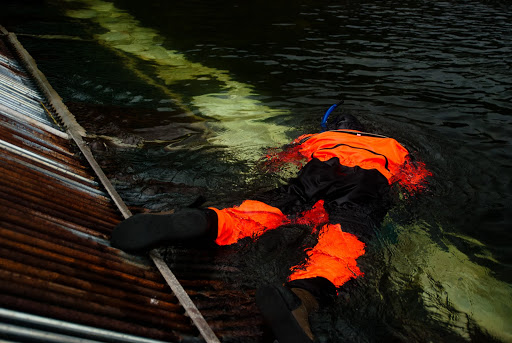
Not a corpse – just Joe in a drysuit, snorkeling along the weir and checking the sandbags.
It turns out to be pretty hard to take a picture of someone snorkeling in which they don’t look like dead body, so you might get a better idea from some of the video taken by Elizabeth, the intern working with me.
We’re talking and making noise so that the bears know where are while we’re sitting on the weir and counting fish. On the right you can see Jon standing on top of a log; he’s looking around the corner at the second weir, and then blowing an airhorn to tell the bears they can’t start fishing over there because we’re still around. In the background noise, first I am translating a Russian folksong which I’ve just finished singing, and then later starting to sing the only other Russian song I know. Not captured on this video is my exciting rendition of Angel from Montgomery.


